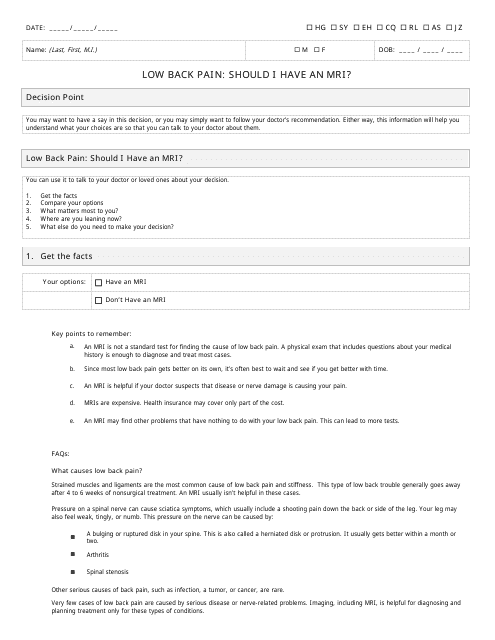Free Back Pain Chart Templates
Back Pain Chart: What Is It?
A Back Pain Chart is an informative tool prepared to represent the external and internal structure of the back in order to discover the underlying issues that cause back pain.
Alternate Name:
- Back Pain Diagram.
The doctor can share this instrument with their patient to assess their physical sensations, figure out where the pain is coming from, and correctly diagnose the person in question. This chart can be useful to medical students - they can learn human anatomy and probable causes of pain with the help of a visual tool - and people that want to understand whether they will be able to get rid of a mild pain that distracts them from their daily tasks without booking an appointment with a doctor.
For a full list of Back Pain Chart templates please check out our library below.
There are two ways you can create this diagram for your own convenience and for the patient to understand the information as well:
-
Demonstrate the anatomy of the back by showing a body of a human and point out what may cause pain in different areas. Additionally, you may offer generic advice next to every body part on the chart - for instance, if the patient feels soreness in their lower back, remind them to improve their posture and avoid lifting heavy objects.
-
Show the back anatomy in more detail - it is possible the pain is located in the spine, nerves, ligaments, or muscles. Name all the areas displayed on the chart (either write on top of them or indicate the names next to the chart with lines leading to the elements you are describing) and provide a summary of the issues that may be the reason for discomfort in a certain spot.
Still looking for a particular template? Take a look at the related templates below:
Documents:
2
This document provides a consumer's guide for managing back pain, created by the Musculoskeletal Health Network under the Department of Health in Western Australia, Australia. It offers valuable information and tips for individuals seeking to effectively manage and find relief from back pain.
This document is utilized as an assessment tool for detailing symptoms, history, and severity of a patient's lower back pain before undergoing an MRI scan. It aids healthcare professionals in accurately diagnosing and treating the pain.


